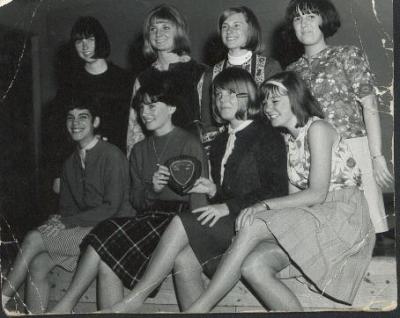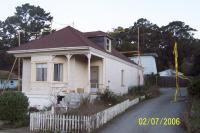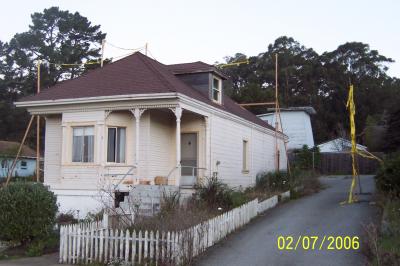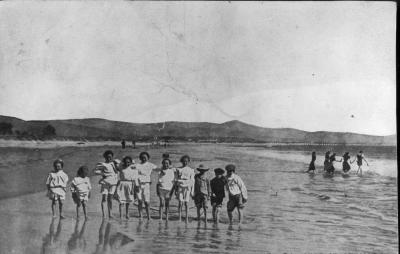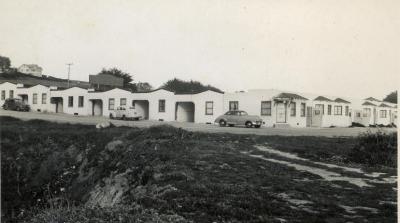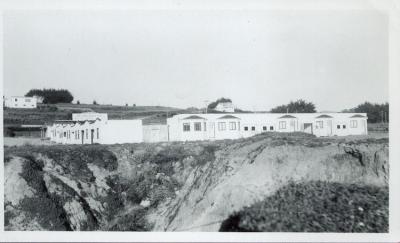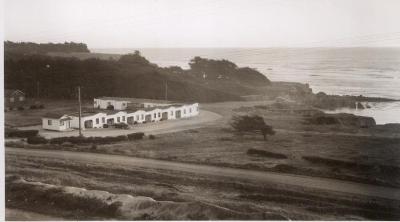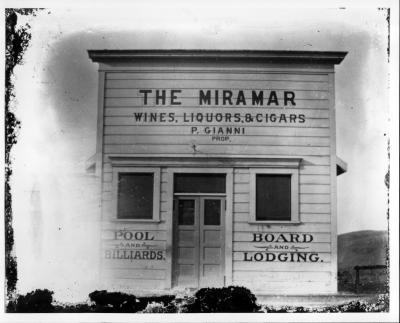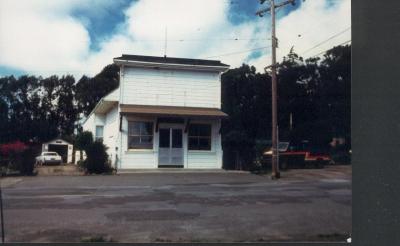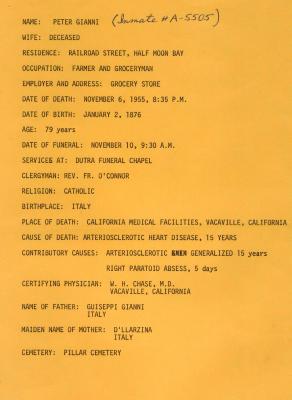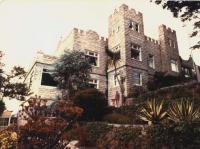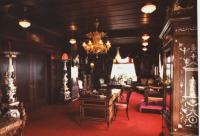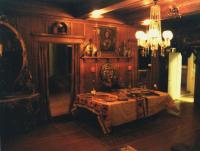(Photo at right: Shirley Thackara in the PQ14 at the Moss Beach military airstrip)
Former Air Force Service Pilot Shirley Thackara returned to the Coastside in 1993 to reclaim WWII memories of flying PQ14s, tiny planes, so tiny only one person could fit inside.
She flew the PQ14 out of a military airstrip in Moss Beach. Her scarey assignment three years after Pearl Harbor, she told me, âwas supposed to be very hush-hushâ?. What she did was tow targets behind the plane and military gunners on the ground practiced shooting at themâ pretty dangerous if they missed as stray bullets could do damage to both civilians and Shirley herself– which was why the training occurred on the remote Coastside.
But when Shirley came back to Moss Beach almost 50 years later she said she couldnât find anything she recognized.
The memories hid from her because the Coastside had grown up ,and the reminders swept away since the summer of 1944âwhen Shirley, a 5â11â? former Pan American Airways secretary– decided to turn in her manual typewriter and learn how to fly during WWII.
She trained at Otis Air Force Base in Massachusetts and after 200 hours of flight time she made the grade, became a member of the coveted Women Air Force Service Pilots (WASPS) and was assigned to Moss Beach where she bunked at the edge of the flight strip with fellow WASPS Mary Lee Leatherbee and Mildred Toner. Women flying military planes was groundbreaking.
Moss Beach was in the countryside but even more remote than Shirley Thackara expected. When she saw her new home, an abandoned farmhouse with curtainless windows, her response was ââ¦.it was so awful, it was funny. Everything in dark wood, showing signs of once having been a bird house, three rooms, kitchen with nothing but a sinkâand absolutely no furniture except three Army cots.â?
Parked outside what she dubbed âthe fishing shackâ? was Shirleyâs 1941 Mercury convertible. She recalled driving along the cliffs to Half Moon Bay, but she couldnât find the road in 1993. The âfishing shackâ? was gone, the military strip wasnât where she remembered it and even the road she had traveled had disappeared.
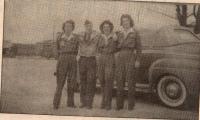 They flew the PQ14s at Moss Beach during WWII: L-R: WASPS Mildred Toner, Mary Lee Leatherbee, Shirley Thackara–with Army Air Force Lt. Nash.
They flew the PQ14s at Moss Beach during WWII: L-R: WASPS Mildred Toner, Mary Lee Leatherbee, Shirley Thackara–with Army Air Force Lt. Nash.
(all photos Shirley Thackara–and thanks to the Spanishtown Historical Society for the introduction to Shirley)

